The Perfect Face, part 4
Published on August 29, 2024 by Kyle Yamamoto
The Perfect Face, part 4
Now that we have discussed facial symmetry, Golden Ratio
proportions, and celebrity features, we will address what is probably the most
loaded topic of our series. How does
“the perfect face” differ between cultures?
proportions, and celebrity features, we will address what is probably the most
loaded topic of our series. How does
“the perfect face” differ between cultures?
The plethora of countries, cultures, and ethnicities across
the globe make this topic almost impossible to adequately cover. I will, however, do my best to discuss the
main ideas of beauty across cultural lines.
the globe make this topic almost impossible to adequately cover. I will, however, do my best to discuss the
main ideas of beauty across cultural lines.
When we think in generalities about the face, we can perceive
the differences in each individual that make us unique. Similarly, we also perceive differences that
give a face its ethnic identity. But
even though you can perceive the differences, how well can you describe them?
the differences in each individual that make us unique. Similarly, we also perceive differences that
give a face its ethnic identity. But
even though you can perceive the differences, how well can you describe them?
A picture is worth a thousand words:
This is Esther Honig is an independent journalist from Ohio, who created
an “experiment” with her face and photo editors across the globe. She sent an unedited, no-makeup, basic photo
of her face to more than 50 photo editors in dozens of countries with one
request: “make me beautiful.” What happened next was a very interesting study
in how humans perceive beauty. She received many submissions of her new
“beautiful” face and the results are discussion worthy.
After receiving numerous submissions from photo editors,
Esther went through the photos and was amazed to discover how her face was
changed. Her skin was made lighter or
darker. Her eye color was changed. Her eyebrows were made thicker or
thinner. Her eye tilt was changed. Her lip or cheek structure was altered. Initially, she could not identify any
consistencies or patterns in the changes to her face across the countries and
cultures that sent her submissions.
Esther went through the photos and was amazed to discover how her face was
changed. Her skin was made lighter or
darker. Her eye color was changed. Her eyebrows were made thicker or
thinner. Her eye tilt was changed. Her lip or cheek structure was altered. Initially, she could not identify any
consistencies or patterns in the changes to her face across the countries and
cultures that sent her submissions.
Here are just five examples of what she received:
Argentina
Germany
Indonesia
Pakistan
What does this mean?
What does the study show?
What does the study show?
Esther says that this project does not necessarily define
beauty or determine what we consider “perfect” across the world. This project helps start the conversation
about beauty—something that is prevalent in our lives and something we think
about often, but don’t truly know how to define. Perhaps the inability to define beauty is
exactly what creates beauty.
beauty or determine what we consider “perfect” across the world. This project helps start the conversation
about beauty—something that is prevalent in our lives and something we think
about often, but don’t truly know how to define. Perhaps the inability to define beauty is
exactly what creates beauty.
Esther’s study “Before and After” stimulates a great
discussion on what we consider the perfect face. Perhaps the perfect face is not something
that can be defined, but rather interpreted differently across cultures, ethnicities,
genders, and time. That’s what makes the
face truly beautiful. The idea that we can take something so intricate,
complex, and abstract as the face and view it as perfect or beautiful without
actually being able to describe it is what makes us human. This is also what
makes the specialty of facial plastic surgery endlessly intriguing and
challenging.
discussion on what we consider the perfect face. Perhaps the perfect face is not something
that can be defined, but rather interpreted differently across cultures, ethnicities,
genders, and time. That’s what makes the
face truly beautiful. The idea that we can take something so intricate,
complex, and abstract as the face and view it as perfect or beautiful without
actually being able to describe it is what makes us human. This is also what
makes the specialty of facial plastic surgery endlessly intriguing and
challenging.
Think about your own background, ethnicity, and culture and
then consider what you perceive to be beautiful. Can you identify your own
influences? Those factors may help you better describe why you view a specific
human face to be “perfect.”
then consider what you perceive to be beautiful. Can you identify your own
influences? Those factors may help you better describe why you view a specific
human face to be “perfect.”
Watch Esther’s TEDx Vancouver talk here: https://youtu.be/WWRXOqYwRkM
And check out Esther Honig’s website here: https://www.estherhonig.com/
Here’s to the beautiful human face,
-Dr. Yamamoto






